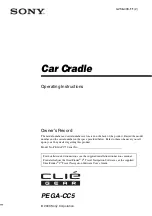
11
○ ○ ○ ○ ○ ○ ○ ○ ○ ○ ○ ○ ○ ○ ○ ○ ○ ○ ○ ○ ○ ○ ○ ○ ○ ○ ○ ○ ○ ○ ○ ○ ○ ○ ○ ○ ○ ○ ○ ○ ○ ○ ○ ○ ○ ○ ○ ○ ○ ○ ○ ○ ○ ○ ○ ○ ○ ○ ○ ○ ○ ○ ○ ○ ○
MODE
o
REPEAT
CHORD
BEAT
TOUCH
MINUS ONE
REVERB
DUAL
CHORUS
HARMONY
DSP
SUSTAIN
m
OTS
NORMAL
SPLIT
SINGLE
FINGERED
Basic Display Operation
The Modes
The MODE button to the right of the display selects one
of the PSR-520’s four operational modes: NORMAL,
SPLIT, SINGLE, and FINGERED. The currently se-
lected mode is indicated by an arrow in the display next
to the mode list printed immediately to the right of the
display. All of the listed modes can be selected by
pressing the MODE button as many times as necessary
until the arrow in the display appears next to the name
of the desired mode.
NORMAL:
The normal play mode (page 12).
SPLIT:
The split-keyboard mode in which different
voices can be played by the left and right
hands (page 15).
SINGLE:
The single-finger accompaniment mode
which allows fully-orchestrated accompa-
niment to be produced by specifying
chords using only one, two or three fingers
(page 31).
FINGERED: The fingered accompaniment mode in
which fully-orchestrated accompaniment is
produced according to chords you play on
the keyboard (page 31).
Song Track Parameters & Icons
Like the accompaniment tracks, each of the 3
song tracks has ON/OFF, voice number
(MELODY tracks), and volume parameters
that can be set as required (page 46). Each
track has its own icon which appears when
the track is ON.
REGIST (Registration Memory)
Indicates the currently selected REGIS-
TRATION MEMORY number (page 45).
TEMPO
Shows the current tempo of accompani-
ment/song playback (page 34).
TRANSPOSE
The current transpose value (page 23).
MEASURE
Indicates the current measure number
during song recording and playback
(page 53).
REPEAT
Indicates the “A” and “B” repeat points
when programming a repeat section.
(page 65)
CHORD
Indicates the current chord name during
accompaniment/ song playback
(page36)
REGIST
TEMPO
TRANSPOSE
MEASURE
REPEAT
CHORD
m
ACCOMP MELODY
1
MELODY
2
Feature On/Off Icons
MINUS ONE
Appears when the MINUS ONE feature is ON (page 64).
REVERB
Appears when the REVERB EFFECT is ON (page 24).
CHORUS
Appears when the CHORUS EFFECT is ON (page 24).
DSP
Appears when the DSP EFFECT is ON (page 24).
TOUCH (Touch Response)
Appears when the TOUCH RESPONSE is ON (page 17).
DUAL (Dual Voice)
Appears when the DUAL VOICE feature is ON (page 17).
HARMONY
Appears when the HARMONY/ECHO is ON (page 20).
SUSTAIN
Appears when the SUSTAIN is ON (page 22).
MINUS ONE
REVERB
CHORUS
DSP
TOUCH
DUAL
HARMONY
SUSTAIN
Summary of Contents for yahama PSR - 520
Page 1: ......
Page 101: ...Address List...
Page 102: ...M D G EMI Division 1995 Yamaha Corporation VT95500 506POCP5 3 01A0 Printed in Japan...













































